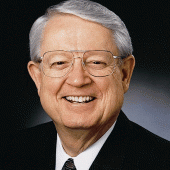How do we deal with those who claim that Christianity doesn’t have a place in the forward-thinking mentality of today? Mark Lanier, one of the top 100 trial lawyers in America and the author of Christianity on Trial, joins Dr. Bill Maier to discuss strategies for defending Christianity from non-believers. He also tells about how the book came from his own experiences and dealings with non-believers and what happened afterwards.
One of the things we can do to make it easier to defend our faith is to frame the debate in a way that makes sense. There are two varieties of evidence: direct and circumstantial. Direct evidence is when you directly experience what is considered evidence. If you want to know if it’s raining, and you walk outside and feel the rain falling on you, you now have evidence that it is, in fact, raining. Circumstantial evidence is instead when you observe the facts around you and make a deduction based on those facts about something else. For example, if your friend walked in and was completely soaked, you could make a deduction based on that fact that it is raining outside.
When discussing religion and asking for “proof” that God exists, most non-believers are asking for some form of direct evidence: that they can feel God with their hands or smell him or see him. However, we cannot prove many aspects of Christianity through direct evidence. We have not seen, smelled or touched God (not in the physical sense, at least). We did not watch as Christ rose from the tomb. But we do have a preponderance of circumstantial evidence to show that there is a God and that he does in fact care about us. It’s not an easy path to defend the faith, but it is, by no means, impossible.






















